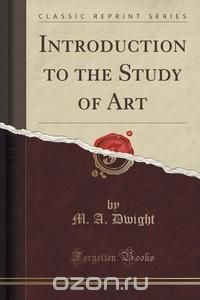Excerpt from Introduction to the Study of Art
Much is said and written upon the importance of cultivating the art of Design. Our people spend freely, are even lavish of money in procuring works of art; and statistics show its importance as a source of revenue when applied to industrial purposes. Yet, as a branch of education, drawing is almost entirely neglected. This is partly from a false idea that success depends upon peculiar abilities with which few are gifted; and partly from ignorance of the kind of cultivation that is necessary to insure success. It is understood that musical skill is acquired only by laborious application and practice, under the best instruction, during several successive years; while at the same time, it is expected that artistic skill will be acquired in the course of a few weeks.
The imposition to which the ignorance of the subject exposes a community in the way of poor teaching, and "royal roads," is incalculable. There is no study in which scholars are so wronged as in this. Young artists suffer for the want of good teaching. No rules are given them, and they have no training which will enable them to rely upon their own abilities, and therefore often say, they "can do nothing out of Italy." Many of the most gifted have been entirely blighted by being sent there to "copy pictures."
"Sir Joshua Reynolds took pupils, and Northcote (who was one of them, and a favorite one too) is the best authority on this point. He informs us, that after the drudgery of the studio was over, cleaning palettes, dead coloring, etc., he was allowed to copy his master's pictures, but received no instruction as to the colors to be used, or the mode of mixing or applying them; on the contraiy. Sir Joshua kept his colors locked up, and never allowed Northcote, or any of his scholars, to see him at work."
About the Publisher
Forgotten Books publishes hundreds of thousands of rare and classic books. Find more at www.forgottenbooks.com
This book is a reproduction of an important historical work. Forgotten Books uses state-of-the-art technology to digitally reconstruct the work, preserving the original format whilst repairing imperfections present in the aged copy. In rare cases, an imperfection in the original, such as a blemish or missing page, may be replicated in our edition. We do, however, repair the vast majority of imperfections successfully; any imperfections that remain are intentionally left to preserve the state of such historical works. Это и многое другое вы найдете в книге Introduction to the Study of Art (Classic Reprint) (M. A. Dwight)
